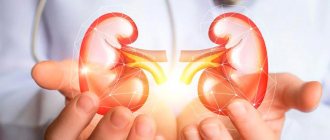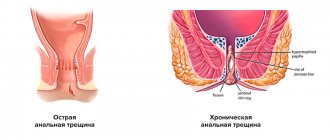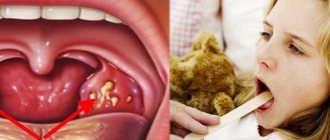Last update: 02/21/2021
Author of the article: pediatrician Valentina Razheva
One of the effective ways to combat skin diseases is to follow the basics of proper nutrition. We invite you to familiarize yourself with the diet for eczema. Along with medical treatment prescribed by a doctor and physiotherapeutic procedures, adjusted nutrition for eczema can significantly reduce the manifestations of the disease. Thanks to the tips below, as well as a summary table of prohibited and permitted products, it will be much easier for you to avoid exacerbations of the disease and prolong periods of remission.
Hypoallergenic diet for eczema in adults and children: what can you eat?
The list of products allowed for skin diseases should be announced by the doctor, focusing on the intensity of eczema, its nature, symptoms and general health. Each case is individual, so a dish that causes an exacerbation of the disease in one patient may be completely safe for another. However, there are a number of general restrictions that most people suffering from itchy skin, redness and rashes should adhere to.
What should be the diet for eczema on the arms, legs and other parts of the body?
First of all, you need to note the optimal method of preparing food. You'll have to give up fried foods. In some cases, such a refusal may be temporary and come into force only during exacerbations of the disease. However, the patient will significantly improve his health if he eliminates fried foods altogether. As an alternative, you can eat baked foods, and in some cases, grilled ones (however, this aspect should definitely be discussed with your doctor).
It is recommended to boil or steam dishes that are included in the diet menu for eczema. As for fresh vegetables and fruits, in most cases they are consumed raw (the exception may be apples and pears - they are often baked). Vegetable and fruit juices should not contain sugar or preservatives. If the juices are concentrated, it is better to dilute them with water.
In most cases, exacerbation of eczema is caused by protein foods, dishes high in starch and sugar, as well as vegetables, berries and fruits of red, black, yellow and orange. However, since the diet must be balanced and complete, you cannot blindly give up all types of protein foods and sweets in order to completely switch to safe plant-based foods. That is why it is not recommended to create your own diet: this should be done by a qualified allergist, dermatologist or nutritionist. At the same time, the patient himself must be sufficiently familiar with permitted and prohibited products in order to find an appropriate replacement for potentially dangerous dishes.
What foods are suitable for creating a diet menu for eczema, and which ones should you avoid? You will find the answer in the table:
| Most allergenic foods | Products of medium and low allergenicity |
| Cow's milk protein and products prepared from it. | Ghee, dairy products. |
| Citrus. | Bananas. |
| Caviar, shrimp, shellfish, lobster, red fish, squid. | River fish. |
| Cocoa, coffee, chocolate, nuts. | Dried fruits. |
| Cakes, pastries, muffins with rich cream, chips. | Rough bread. |
| Chicken eggs. | Vegetable oils. |
| Fatty pork, duck, goose, smoked meat. | Lamb, horse meat, beef, rabbit. |
| Wheat and gluten. | Rice, oats, peas, unroasted buckwheat. |
| Some spices. | |
| Tomatoes and other brightly colored vegetables. | Cabbage, zucchini, green bell pepper, potatoes. |
| Red fruits and berries. | Rose hips, cherries, pears, green and white apples, gooseberries, white currants. |
Despite the fact that the list of prohibited foods is quite extensive, you can find a more suitable alternative to a dangerous product. Nutrition for dry and weeping eczema can be varied through the following substitutions:
| Potentially Hazardous Products | Safe Alternative |
| Milk, cheese, cottage cheese and other products based on milk. | Coconut and rice milk can be consumed occasionally. In addition, consume low-fat fermented milk: in most cases, bifidobacteria contained in lactic acid products have a positive effect on the condition of the intestines, and therefore damaged skin. |
Alternative Foods for Eczema: Almond Milk
| Red apples. | Green and white varieties of apples (Semerenko, Antonovka). |
| Wheat flour products (with gluten). | Gluten-free products (crackers, cookies, pasta), whole grain breads and crisps. |
| Sweets (chocolate, candies, cakes). | Carob, dried fruits. When choosing dried fruits, pay attention to the method of processing: a quality product should be obtained naturally (drying in the sun or in the shade), and not by processing with chemical compounds. |
| Fatty meat (pork, duck). | Lean varieties of beef, horse meat, rabbit and turkey. You need to be careful with chicken meat: in rare cases, it can cause an exacerbation of the symptoms of the disease. In such cases, it is recommended to abandon it completely or consume it occasionally (and only the dietary part - the breast). You can also eat specialized canned food for children (pureeed meat). |
| Meat broths. | Vegetable broths. |
| Seafood. | In some cases, you can replace sea fish with lean river fish. |
| Carbonated drinks with dyes. | Rose hip decoction. |
| Tomatoes, spinach, red bell pepper, beets. | All varieties of cabbage, except red cabbage (Savoy, Peking, white cabbage, broccoli, cauliflower), zucchini, squash, asparagus, young green peas. |
| Butter, margarine, lard. | Vegetable oils (olive, sunflower, rapeseed). |
| Artificial (chemical) food additives. | In very small quantities: black pepper, ginger, curry. |
Diet for eczema on hands
In addition to aesthetic disadvantages, eczema on the hands causes a number of inconveniences to a person while performing everyday household duties - cooking, laundry, washing dishes. The diet for eczema of the hands, palms and areas of skin between the fingers must be strictly followed if you want to cope with the disease.
Diet for eczema: menu for one day
One of the main requirements in relation to nutrition (diet) for eczema is to eat small portions, but often. There should be 4-5 meals a day: breakfast, lunch, dinner, afternoon snack (optional) and dinner. Below is a sample menu for the day:
| Breakfast | Lunch | Dinner | Afternoon snack | Dinner |
| Oatmeal cooked in water. Weak tea. | Fruits from the list of permitted. | Soup with vegetable or beef broth. Vegetable stew. | Homemade yogurt or low-fat kefir. | Salad of permitted vegetables with vegetable oil. Steamed turkey cutlet. |
The dishes proposed above can be replaced with others at your discretion: the main thing is that they are prepared from permitted products. Also, remember to consume the required amount of fluid. It can be clean water, still mineral water, weak tea.
Disease triggers
Researchers believe that eczema is the result of an interaction between an overactive immune system and certain triggers. One of these triggers has been identified as food, so following an eczema-friendly diet may play a role in treating symptoms.
Eating certain foods does not cause eczema, but instead causes a flare-up if you already have the condition. It is also important to note that you may have food sensitivities or food allergies. Food sensitivities are triggered by the digestive system, which is triggered by the immune system.
Identifying foods that cause symptoms can be challenging and is often a process of eliminating and reintroducing those foods into your diet, one food at a time.
Removing known food triggers from your diet may not completely eliminate flare-ups, but it will reduce them.
What remedies help with eczema besides diet?
Proper nutrition is an important component of the treatment and prevention of the disease. However, treatment should consist not only of observing a number of rules and restrictions regarding food, but also of using emollients for damaged areas of the skin. La Cree products are excellent for this purpose.
Intensive cream "La-Cri" is well suited for dry eczema, accompanied by severe itching and flaking of the skin. The product contains natural ingredients: violet and licorice extracts, wheat germ oils, jojoba and shea butter, lecithin, bisabolol and allantoin.
Sources
- Carrasco P., Estarlich M., Iñiguez C., Ferrero A., Murcia M., Esplugues A., Vioque J., Marina LS., Zabaleta C., Iriarte G., Fernández-Somoano A., Tardon A., Vrijheid M., Sunyer J., Ballester F., Llop S. Pre and postnatal exposure to mercury and respiratory health in preschool children from the Spanish INMA Birth Cohort Study. // Sci Total Environ - 2021 - Vol782 - NNULL - p.146654; PMID:33838378
- Zarini GG., Masters J., McLean MA., Strobel CT. Clinical and Anthropometric Improvements with a Tailored Dietary Approach in Pediatric Crohn's Disease. // Altern Ther Health Med - 2021 - Vol - NNULL - p.; PMID:33711815
- Logan CD., Norton SA. At the dinner table with Adam and Eve. // Pediatr Dermatol - 2021 - Vol - NNULL - p.; PMID:33656169
- Trikamjee T., Comberiati P., D'Auria E., Peroni D., Zuccotti G.V. Nutritional Factors in the Prevention of Atopic Dermatitis in Children. // Front Pediatr - 2021 - Vol8 - NNULL - p.577413; PMID:33585361
- No authors found Correction: Ethnic differences in maternal diet in pregnancy and infant eczema. // PLoS One - 2021 - Vol16 - N1 - p.e0246481; PMID:33508000
- Ogawa K., Pak K., Yamamoto-Hanada K., Ishitsuka K., Sasaki H., Mezawa H., Saito-Abe M., Sato M., Yang L., Nishizato M., Konishi M., Sago H ., Ohya Y. Association between maternal vegetable intake during pregnancy and allergy in offspring: Japan Environment and Children's Study. // PLoS One - 2021 - Vol16 - N1 - p.e0245782; PMID:33507986
- Ross AB., Barman M., Hartvigsson O., Lundell AC., Savolainen O., Hesselmar B., Wold AE., Sandberg AS. Umbilical cord blood metabolome differs in relation to delivery mode, birth order and sex, maternal diet and possibly future allergy development in rural children. // PLoS One - 2021 - Vol16 - N1 - p.e0242978; PMID:33493154
- Ballart M.J., Monrroy H., Iruretagoyena M., Parada A., Torres J., Espino A. . // Rev Med Chil - 2021 - Vol148 - N6 - p.831-841; PMID:33480383
- Tanaka K., Okubo H., Sasaki S., Arakawa M., Miyake Y. Maternal caffeine intake during pregnancy and risk of food allergy in young Japanese children. // J Paediatr Child Health - 2021 - Vol - NNULL - p.; PMID:33464698
- Chan CWH., Leung TF., Choi KC., Tsui SKW., Wong CL., Chow KM., Chan JYW. Association of early-life gut microbiome and lifestyle factors in the development of eczema in Hong Kong infants. // Exp Dermatol - 2021 - Vol - NNULL - p.; PMID:33433023
Clinical researches
Conducted clinical studies prove the high efficiency, safety and tolerability of the products. The cream for sensitive skin is suitable for daily care of adult and children's skin with mild to moderate forms of atopic dermatitis and during remission. As a result of therapy, a decrease in the activity of the inflammatory process, a decrease in dryness, itching and flaking was noted.
Many remedies are recommended by the Union of Pediatricians of Russia.
Sources:
- Ratner Desiri, Avram M.R., Avram M.M., Procedures in Dermatology. Clinical cosmetology, GEOTAR-Media, 2021.
- Sukolin Gennady Ivanovich, Clinical dermatology. A short guide to the diagnosis and treatment of dermatoses, Notabene, 2017.
- Sukolin Gennady Ivanovich, Illustrated clinical dermatology. Brief alphabetical reference book, Lux Print publishing house, 2010.
Photos of eczema
Photo album on the diseaseCauses of allergic dermatitis
Allergic dermatitis includes many inflammatory processes on the skin associated with the negative effects of irritants, most often food allergens. Very often, the disease is provoked by certain foods - the pathogen enters the circulatory system through the gastrointestinal tract. It is also worth noting indirect causes that can also cause symptoms of allergic dermatitis. These include:
- genetic predisposition;
- hormonal disorders;
- deficiency of vitamins and minerals in the body;
- unbalanced diet;
- stress and nervous tension;
- mental disorders;
- physical overload;
- autoimmune diseases;
- disruptions in stomach functions.
The environment also influences the development of the disease - in regions with poor ecology there are more patients with this pathology than in areas with a favorable environmental situation.











